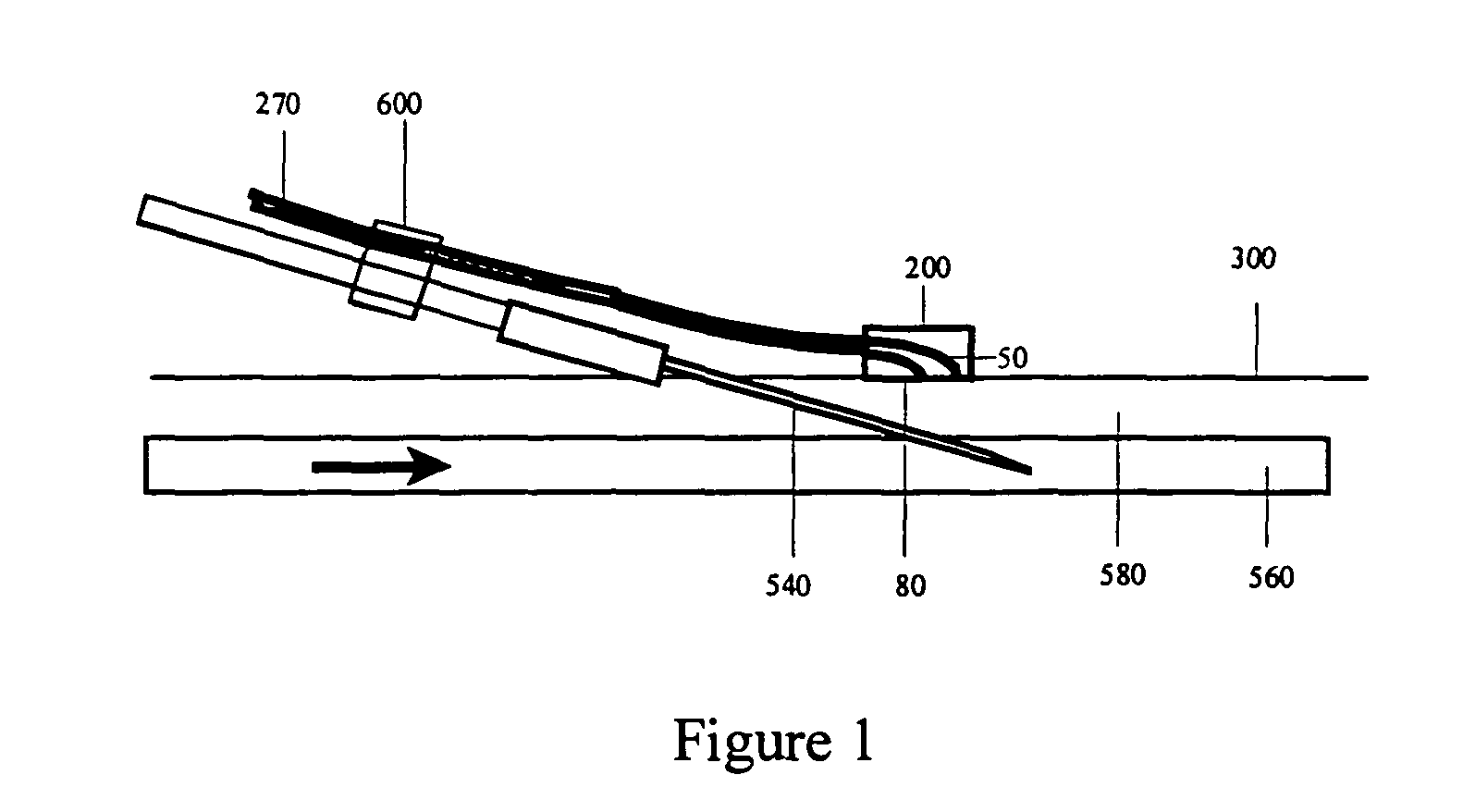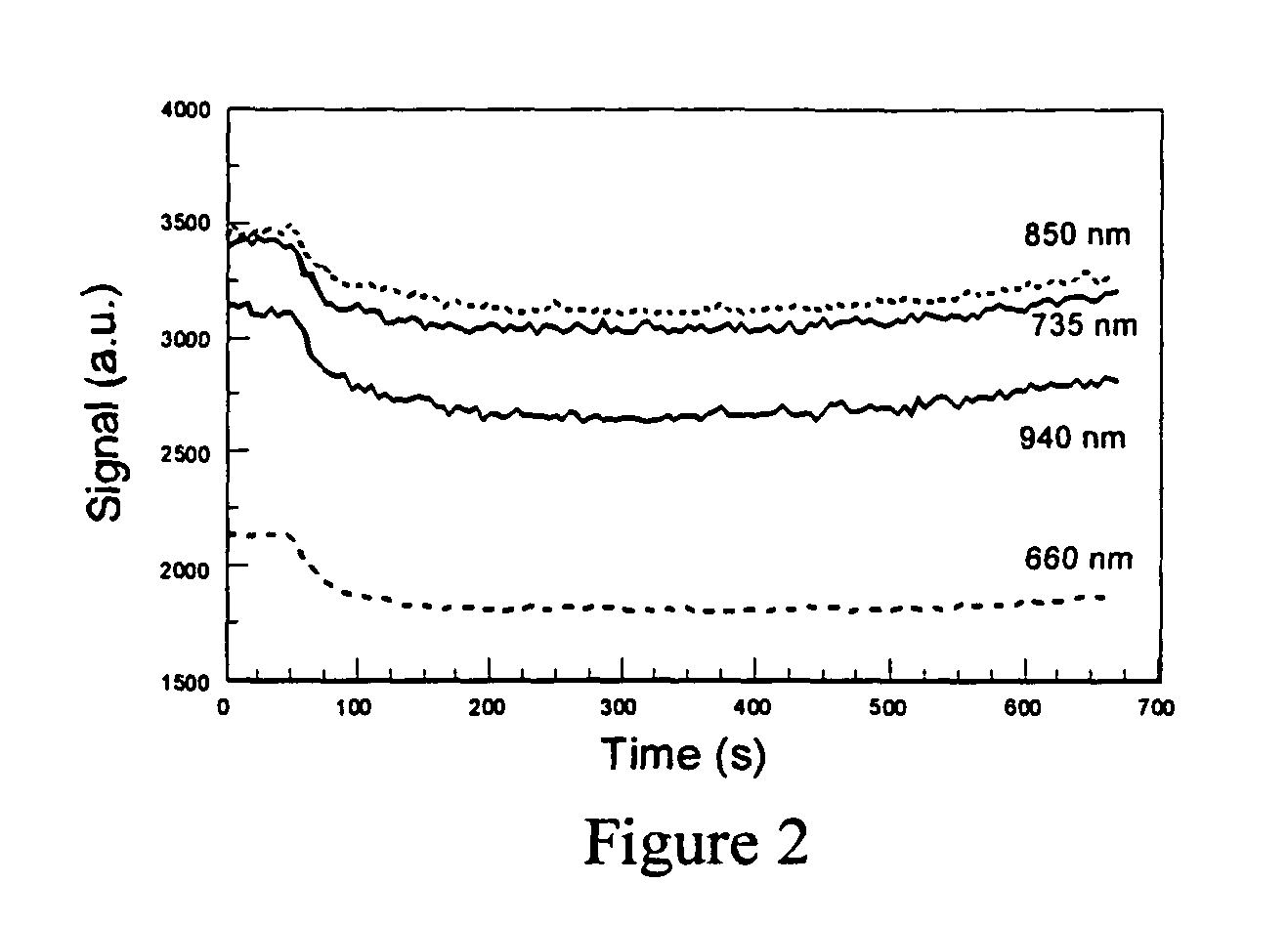Optical detection of intravenous infiltration
a technology of intravenous infiltration and optical detection, which is applied in the field of optical detection of intravenous infiltration, can solve the problems of tissue necrosis, skin grafting, or amputation, necrosis of skin debridement, and precipitation of significant scarring around joints, so as to achieve less complex and more reliable results
- Summary
- Abstract
- Description
- Claims
- Application Information
AI Technical Summary
Benefits of technology
Problems solved by technology
Method used
Image
Examples
Embodiment Construction
[0033]As shown in FIG. 1, when a beam of optical radiation impinges on skin 300 near an IV infusion site, the radiation reflected, scattered, diffused or otherwise emitted from the skin can be measured. As shown in the figure, an optical fiber bundle 270 comprises an illumination light guide 50 that provides illumination to the infusion site and a collection light guide 80 that collects the electromagnetic radiation reflected from the infusion site. The ends of the light guides 50 and 80 are embedded in a skin-contact sensor 200 that is secured onto the skin 300. A needle 540 is inserted through the skin 300 into a vein 560 for infusion of IV fluids.
[0034]When IV fluid infiltrates the interstitial tissue space, optical density of tissue changes. This change can be measured as follows. First, the infusion site is illuminated using a beam of electromagnetic radiation with certain wavelength. Before energizing the illumination source, the radiation collected after insertion of the need...
PUM
 Login to View More
Login to View More Abstract
Description
Claims
Application Information
 Login to View More
Login to View More - R&D
- Intellectual Property
- Life Sciences
- Materials
- Tech Scout
- Unparalleled Data Quality
- Higher Quality Content
- 60% Fewer Hallucinations
Browse by: Latest US Patents, China's latest patents, Technical Efficacy Thesaurus, Application Domain, Technology Topic, Popular Technical Reports.
© 2025 PatSnap. All rights reserved.Legal|Privacy policy|Modern Slavery Act Transparency Statement|Sitemap|About US| Contact US: help@patsnap.com



